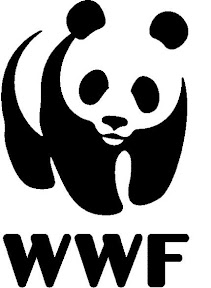Very recently, the World Wildlife Foundation (WWF) released the 2008 Living Planet Report, 10 years after the first one. I downloaded it along with the 2006 report for comparison. The first thing I have to say is that I don’t think I have ever seen better graphs. I think they have invented completely new graph types for these reports. Whoever is in charge of the graphing should get some sort of award. I never imagined it was possible to convey that much information in just one graph and the report is packed with them.

The foreword talks about how devastated we have been by the economic crisis and goes on to explain that the economic crisis will be nothing compared to the ecological crisis we face. The report uses complementary measures to explore the changing state of global biodiversity and of human consumption. The Living Planet Index reflects the state of the planet’s ecosystems while the Ecological Footprint shows the extent and type of human demand being placed on these systems. The data shows that humanity’s demand on the plant’s living resources (its Ecological Footprint), now exceeds the planet’s regenerative capacity by about 30%.
The report goes into some detail about water resources and how they are being depleted very rapidly. This is a very serious issue which I will deal with in another post. The thing that I found most interesting in the report was how globalisation has allowed nations to export their ecological footprint. Amazingly, the current chapter in the book I am reading (Making Globalisation Work) is about this exact thing. First world countries may not be able to afford to cut down what is left of their forests, but it’s easy for them to buy the wood from other countries who are so desperate for money that they don’t care if they have no forest left. In that, and many other ways, first world countries are able to externalise the environmental costs of production.The report has a section dedicated to global trade which looks at the ecological footprint of international trade flows.
The report is not all doom and gloom. Accompanying all of these facts are informative sidebars on what is currently being done to address some of these issues as well as suggestions on what else we can do in order to save the planet.
When it comes to doing things to save the planet, I had no idea the WWF did so much good work. The other day I attended a panel discussion on the effect our eating habits have on the environment. The WWF presented on two of the projects in which they are involved and when I went to the website I saw that they are involved in many more. Then I opened the newspaper and read about more projects they are involved with including an interesting report which they commissioned. The report was researched by the University of Cape Town and shows that electricity from renewables like wind and solar will require large scale investment but will not significantly raise the price of electricity.
I think the WWF must be the most active and effective environmental organisation in the world. I recommend you check out their website. Download and read the Living Planet Report and take a look at some of the other very interesting reports available on the website. Maybe even make a donation because I’m confident they will put it to good use.